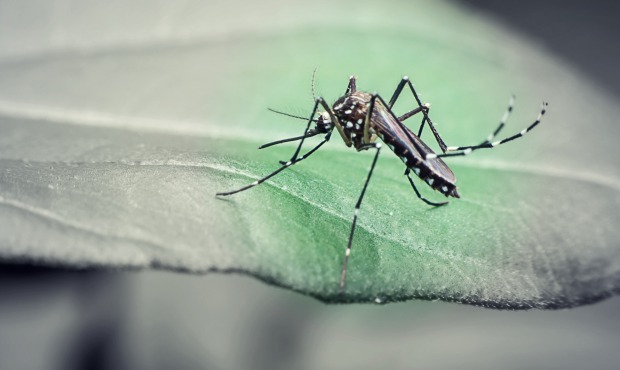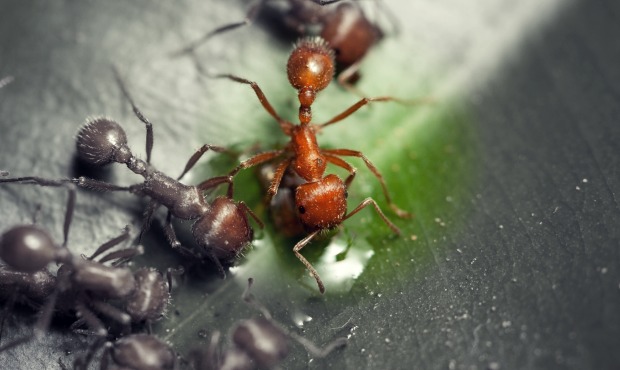
Spring, while objectively beautiful, isn’t limited to blooming flowers and green grass. It is also when the great outdoors’ most annoying—and sometimes dangerous—pests can wreak havoc on your adventures.
Learn how to avoid these five nasty, irritating and persistent springtime pests while enjoying the trails.
Ticks
Ticks are a serious concern for outdoor enthusiasts as they often carry diseases—namely Lyme disease—which can be debilitating for humans and other animals. Symptoms of Lyme disease vary widely but may include a migrating, chronic rash, joint pain, lethargy and even partial paralysis.
Ticks are common across the U.S., but are most prevalent in the Northeast, Northern Midwest and areas west of the Rockies. These tiny little bloodsuckers jump on exposed areas of skin (or fur) and latch on without you even noticing. The longer a tick is attached to your skin, the higher your risk of infection, so prompt removal is of utmost importance.
How To Avoid Them
The best way to avoid a tick bite is to wear long sleeves and pants whenever hiking or running through a wooded area. DEET is an effective tick repellent, but if heavy chemicals make you nervous, BiteBlocker is a safer alternative.
Organic repellents often contain orange oil or other essential oils and can be effective for short amounts of time. Make sure your four-legged trail companion receives regular tick prevention treatment, as well.
You can also greatly reduce your chances of complications from a tick bite by taking a shower within two hours of being outside and performing a whole body check (on both you and your pet) within 36 hours of returning from an area where ticks may be present.
What To Do If You Get Bit
First and foremost: don’t panic! A tick bite doesn’t automatically mean you’re infected, as most ticks don’t carry any disease.
If bit, you’ll want to remove the tick as quickly as possible. However, DO NOT handle a tick with bare hands. Either cover your hands with tissue paper or wear gloves to remove the tick with a fine-tipped tweezer. Grab the tick close to its mouth (the part in your skin) and not around its body, which could cause it to push infected fluid into your body.
Gently pull straight out (don’t twist) until its mouth lets go of your skin. Place the tick in a jar or re-sealable bag so you will have it on hand should you start to show symptoms and need to go to the doctor.
Flies

At a minimum, flies are a simple nuisance to outdoorsmen, but some flies—such as horse flies—can bite, leaving painful welts behind.
Once the weather begins to warm, flies of all varieties begin to swarm and find places to lay their eggs. Horse flies are considerably larger than the common housefly, and the females are quite aggressive blood feeders, usually aiming for repeated spots on the legs and arms of their victims.
How to Avoid Them
Flies, in general, are inactive at night and before sunrise; so early morning hikers are unlikely to encounter them. Much like mosquitos and other blood-sucking insects, horse flies are attracted to the carbon dioxide that humans and animals expel while breathing.
The best way to avoid flies and horse flies is to wear long-sleeved clothing, hats and long pants while outdoors. Essential oils can also provide protection by deterring them from feasting or swarming near you.
A blend of lavender, citronella, peppermint and eucalyptus is particularly effective against a wide range of insects, including flies, horse flies and mosquitos.
What to Do If You Get Bit
Horse fly bites are quite painful but very rarely turn serious. Cool the area of the bite with a wet, cold washcloth, then disinfect it with simple soap and water. You can also take an anti-allergy tablet to control the itchiness of the bite.
If the area remains red, swollen and itchy after a few days, go to your local pharmacy for an over-the-counter insect bite treatment.
$PageBreak$
Bees/Wasps

Spring is when bees and wasps begin to build their nests and hives for the summer months, which will then go dormant after the first frost of the year.
Bees and wasps sting very differently. Bees inject all their poison at once—up to 50 micrograms—before they lose their stinger (usually inside your skin) and die.
Wasps, on the other hand, retain their stinger, enabling them to inject a small amount of venom—around 15 micrograms—several times. Wasp venom and bee venom are quite different, and although their effects are similar (painful, itchy swelling at the sting site), a person can be highly allergic to one and not the other.
It’s also important to note that you can develop an allergy to wasps or bees over time, so just because you didn’t have a bad reaction one time doesn’t mean you won’t the next time around.
People with severe venom allergies can develop a dangerous anaphylactic reaction to a bee or wasp sting, causing their mouth and throat to close up. If you know you have or might have a severe sting allergy, always carry an Epi-Pen while outdoors.
How to Avoid Them
Avoid wearing perfume, cologne, bright colors or floral patterns while outdoors—any of these can attract bees and wasps. Snacking on sugary foods and drinks can also attract bees and wasps.
If a bee or wasp lands on you—don’t swat at it, but instead stay very still and it will most likely fly away. Swatting at wasps can aggravate them, which is the last thing you want.
What To Do If You Get Stung
If you get stung and begin to feel dizzy or have trouble swallowing, you need to seek emergency medical treatment immediately. You can treat mild to moderate stings at home by washing the sting area with soap and water and applying a cold pack to the wound to reduce swelling and pain.
Antihistamines can help prevent swelling and itching, and ibuprofen can reduce pain. If you continue to have increased swelling over the next several days, you may need to see a doctor to receive steroid cream. And if you don’t have an up-to-date tetanus immunization, you’ll need to get another tetanus shot after you’ve been stung.
Mosquitos

While the media continues to focus on the mosquito-carried Zika virus, mosquito bites can cause a host of other diseases—like West Nile and dengue fever— but instances of all of these diseases compared to the number of mosquitos bites per year is incredibly small.
If you’re pregnant or trying to conceive, the Centers for Disease Control (CDC) currently recommend you avoid travelling to high-risk areas like Brazil and Puerto Rico.
How to Avoid Them
Your best line of defense is to apply DEET or another outdoor repellent, but natural options like citronella sprays, candles and the ThermaCELL mosquito repellent outdoor lantern for campsites are also good options.
Avoid camping or hanging out near stagnant water—which is where mosquitos breed and grow—and be sure to wear long sleeves, pants and a hat while outdoors to limit your amount of exposed skin.
Mosquitos are most attracted to heat, sweat and your breath, so avoid hiking or running in the heat of the day, and head out at dawn or after sunset when they are most inactive. Much like other biting or stinging insects, mosquitos are also attracted to scented lotions and soaps, so keep those to a minimum while camping or spending time outdoors.
What To Do If You Get Bit
Mosquito bites quickly become very itchy, so apply a hydrocortisone cream or calamine lotion for relief. While their bites generally go away within a few days, if you begin feeling feverish or exhibit flu-like symptoms within 48 hours of a bite, contact your doctor. And, of course, pay attention to any CDC warnings about mosquitos or other insect-born diseases when travelling overseas.
Fire Ants

While not commonly seen in the upper Midwest and North Atlantic, fire ants are a common pest in areas like California, Texas and Arizona. Fire ants are reddish brown in color and generally much larger than the common picnic ant, growing up to one-fourth an inch in length.
How to Avoid Them
Unlike the common ant, which builds underground nests, fire ants construct large mounds, which can grow up to two feet in height. While they can construct these mound nests in any type of soil, fire ants generally prefer soil found in sunny areas like pastures, parks, lawns and large fields. A fire ant bite is quite painful and can cause sever allergic reactions.
It’s hard to be attacked by a fire ant while you’re moving on a trail. However, keep an eye out for fire ant mounds anytime you stop for a picnic or set up a campsite.
If you do any summer backyard camping with your kids, make sure you’ve treated any fire ant mounds with ant bait, which you should place around the mound and not inside of it.
What To Do If You Get Bit
You should treat fire ant bites like any other insect sting. Clean the area and apply antiseptic and anti-itch cream, and the welt should go away in a few days.
 Book your next camping trip
Book your next camping trip